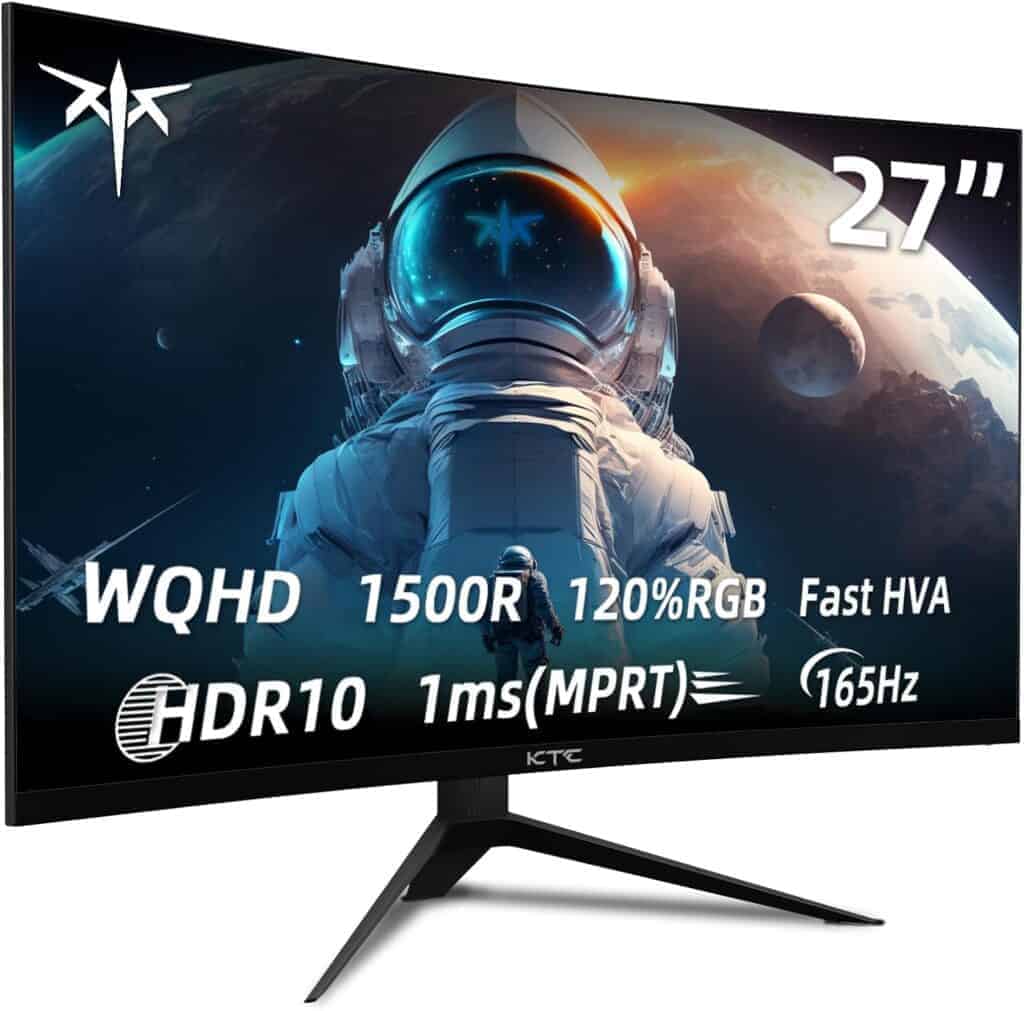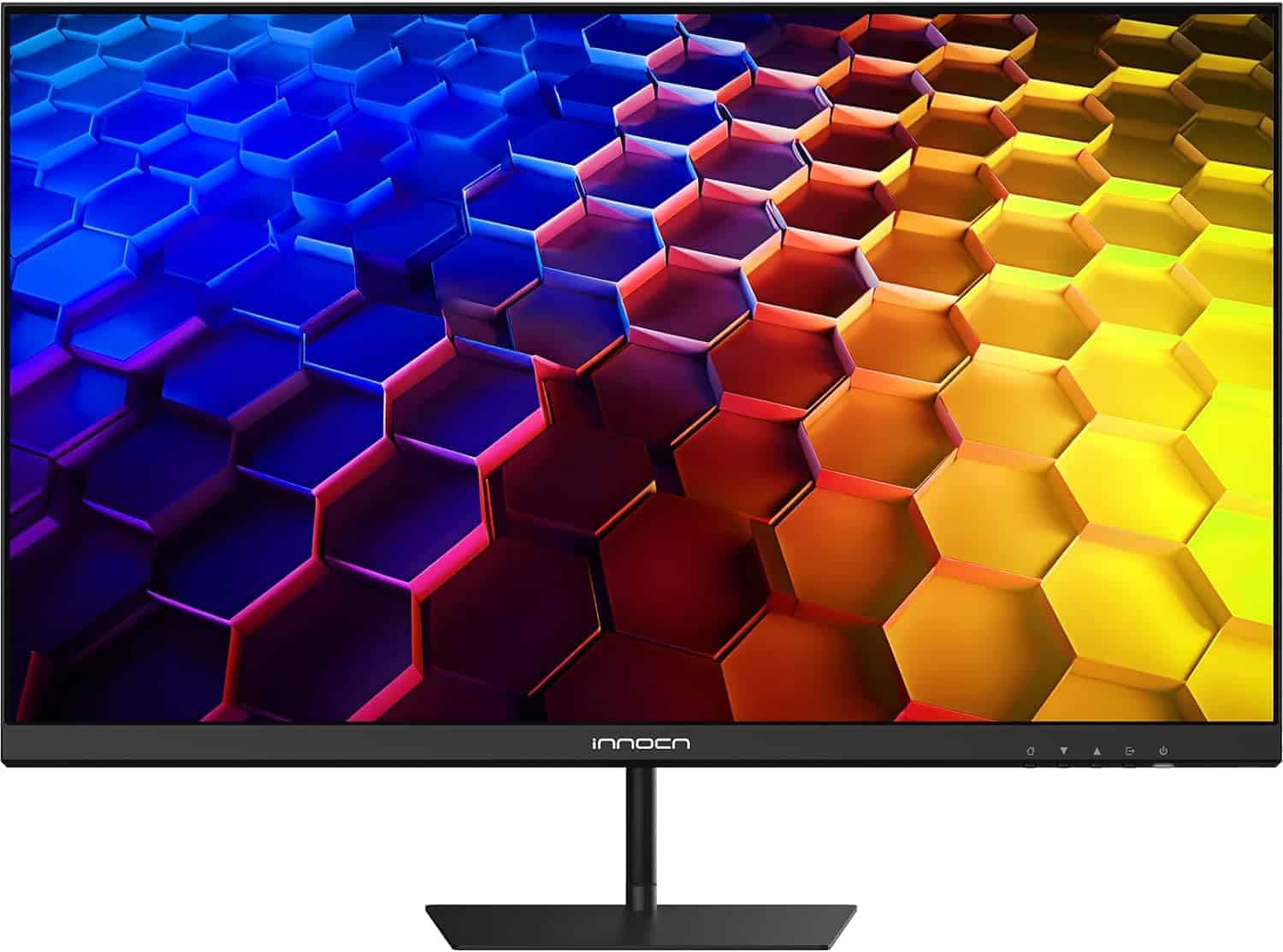Quick Take: Opt for a 1440p monitor. When you downscale resolution, there will always be some loss in image quality that you’re likely to notice. If you’re not prepared for 4K gaming just yet, it’s best to stick with a 1440p monitor for now. Downscaling from 4K to 1440p can lead to poor image quality due to the non-linear scaling of resolutions.
A high refresh rate 1440p monitor strikes an excellent balance, providing great performance without the complications of downscaling. Choosing between a 4K monitor that you would downscale to 1440p and a native 1440p monitor depends on your individual needs, budget, and future gaming plans. Be sure to consider the pros and cons, your hardware capabilities, and how technologies like DLSS and FSR might fit into your gaming setup.
Downscaling 4K to 1440p: Pros and Cons
| Pros | Cons |
|---|---|
| Sharper Text and Images: Downscaling can result in slightly sharper text and images compared to native 1440p, especially on a high-quality 4K monitor. | Not True 1440p: The downscaled image won’t be a perfect match for native 1440p, and you might notice slight blurriness or inconsistencies, especially in games. |
| Future-Proofing: You’ll be prepared for future GPUs that can handle 4K gaming or other tasks that benefit from the higher resolution. | Higher Cost: 4K monitors are generally more expensive than 1440p monitors with comparable features. |
| Flexibility: You can switch between 4K and 1440p depending on your needs. | Potential Performance Impact: Downscaling can add a slight performance overhead, though this is usually minimal with modern GPUs. |
| More Screen Real Estate: You’ll have more screen space for multitasking or productivity tasks, even when downscaled to 1440p. | Not Ideal for All Content: Some content, like videos or games, might not look as good when downscaled compared to native 1440p. |
Getting a Native 1440p Monitor: Pros and Cons
| Pros | Cons |
|---|---|
| True 1440p: You’ll get a native 1440p experience with optimal clarity and sharpness. | Lower Resolution: You won’t have the option of using the full 4K resolution for tasks that benefit from it. |
| Cost-Effective: 1440p monitors are generally more affordable than 4K monitors. | Less Future-Proofing: You might need to upgrade sooner if you want to move to 4K in the future. |
| Excellent for Gaming: 1440p is a sweet spot for gaming, offering a good balance of visual fidelity and performance. | Less Screen Real Estate: Compared to a 4K monitor, you’ll have less screen space for multitasking. |
| Wide Availability: There’s a wide variety of 1440p monitors available with different features and refresh rates. |
Which Should You Choose?
- Gamers: If your primary focus is gaming, a native 1440p monitor is generally the better choice. It offers a great balance of visuals and performance at a more affordable price.
- Multitaskers and Productivity Users: If you need a lot of screen real estate for multitasking or productivity tasks, a 4K monitor downscaled to 1440p might be a good option.
- Future-Proofing: If you want to be prepared for future 4K content and GPUs, a 4K monitor offers more flexibility.
Additional Considerations:
- GPU Capabilities: Ensure your graphics card can handle 1440p or 4K gaming at your desired refresh rate.
- Monitor Size and Refresh Rate: Consider the monitor size and refresh rate that best suits your needs and preferences.
- Budget: Set a budget and compare prices for both 1440p and 4K monitors with the features you want.
Ultimately, the best choice depends on your individual needs and priorities. Carefully weigh the pros and cons of each option to make an informed decision.
4K vs. 1440p: Choosing the Right Monitor for Your Needs
Understanding the Resolution Difference
A 4K monitor boasts a resolution of 3840 x 2160 pixels, packing in four times the pixels of a 1440p monitor (2560 x 1440 pixels). This results in sharper images, crisper text, and more detailed visuals on a 4K display. However, higher resolution comes at a cost, often requiring a more powerful graphics card to drive it effectively.
Benefits of Downscaling 4K to 1440p
Downscaling refers to displaying a 4K image on a 1440p monitor. This can yield several benefits:
- Improved Image Quality: Downscaling often produces a sharper and more detailed image compared to native 1440p, thanks to the process of “supersampling,” which averages multiple pixels to create a single pixel.
- Future-Proofing: As 4K content becomes more prevalent, owning a 4K monitor ensures you’re ready for the future, even if you’re not using its full resolution at the moment.
- Flexibility: You can switch between 1440p and 4K depending on your needs, such as using 1440p for gaming for better performance and 4K for content creation or media consumption.
Advantages of a Native 1440p Monitor
A native 1440p monitor also offers several advantages:
- Higher Refresh Rates: 1440p monitors often come with higher refresh rates (144Hz or more), which translates to smoother motion and a more responsive gaming experience.
- Lower Cost: Typically, 1440p monitors are more affordable than their 4K counterparts.
- Less Demanding on Hardware: 1440p requires less processing power than 4K, making it easier to achieve high frame rates in games.
Table: 4K vs. 1440p Comparison
| Feature | 4K Monitor | 1440p Monitor |
|---|---|---|
| Resolution | 3840 x 2160 | 2560 x 1440 |
| Sharpness | Highest | High |
| Detail | Highest | High |
| Refresh Rate | 60-144Hz (varies) | Up to 240Hz+ |
| Price | Higher | Lower |
| Hardware Demands | Higher | Lower |
Choosing the Right Monitor
Ultimately, the best choice depends on your individual needs and budget. If image quality is your top priority and you have a powerful PC, a 4K monitor downscaled to 1440p can be a great option. However, if you’re primarily a gamer or on a tighter budget, a native 1440p monitor with a high refresh rate might be a better fit.
Key Takeaways
- Resolution and Performance: Understand how downscaling from 4K to 1440p affects visual quality and gaming performance.
- Cost vs. Benefit: Evaluate whether the extra expense of a 4K monitor is justified for downscaling purposes.
- Technology Considerations: Explore the role of technologies like DLSS and FSR in enhancing gaming experiences on different resolutions.
4K Monitor Downscaling Explained
What It Is:
- Running a 4K monitor at a lower resolution (e.g., 1080p or 1440p) to:
- Improve performance in games or applications
- Enhance text readability for those with visual impairments
- Address compatibility issues with certain programs
How It Works:
- The GPU renders content at the lower resolution.
- The monitor then “stretches” the pixels to fit its 4K display, resulting in a softer image compared to native resolution.

Image Quality:
- Some visual degradation is expected due to imperfect scaling:
- Text might appear slightly less crisp.
- Fine details in images or videos may be less defined.
- Severity depends on:
- Quality of the monitor’s scaling algorithm
- Size of the display (more noticeable on larger monitors)
- Individual sensitivity to visual imperfections
Benefits:
- Improved performance: Lower resolution means less work for the GPU, leading to higher frame rates in games and smoother performance in demanding applications.
- Better text readability: Larger text elements can be easier on the eyes for some users.
- Compatibility: Can resolve issues with programs not designed for 4K displays.
Considerations:
- Not ideal for tasks requiring high visual fidelity: Professional photo/video editing, graphic design, or immersive gaming experiences are best at native 4K resolution.
- Integer scaling: Modern GPUs offer “integer scaling” to display a lower resolution with perfect pixel mapping (e.g., 4 1080p pixels for each 4K pixel), reducing blurriness.
Tips:
- Experiment with different scaling options: Find the balance between visual quality and performance that suits you.
- Consider integer scaling: If available, it can significantly improve image sharpness.
- Adjust text size and scaling settings: Optimize readability for your needs.
- Upgrade GPU: For significant performance gains, consider a more powerful GPU to handle 4K resolution natively.
Understanding Monitor Resolutions: 4K and 1440p
When it comes to choosing a monitor, resolution is a key factor. A 4K monitor offers a resolution of 3840×2160 pixels, providing crisp and detailed images. On the other hand, a 1440p monitor, with a resolution of 2560×1440 pixels, offers a balance between performance and quality.
4K vs 1440p Monitors
| Feature | 4K | 1440p |
|---|---|---|
| Resolution | 3840 x 2160 pixels (8.3 million pixels) | 2560 x 1440 pixels (3.6 million pixels) |
| Pixel Density | 166 ppi (27″ screen) | 109 ppi (27″ screen) |
| Image Quality | Sharper, more detailed, smoother text and graphics | Sharp, good balance of detail and performance |
| Gaming Performance | Demanding on GPU, may require lower settings or frame rates | Generally good performance with mid-range GPUs |
| High Refresh Rate Availability | Less common, more expensive | More widely available, often with 144Hz or 240Hz options |
| Price | More expensive | More affordable |
| Typical Applications | Content creation, professional use, immersive gaming, video editing | Everyday use, gaming, productivity, multitasking |
| Best for: | Users who prioritize sharpness and detail, professional work, editing, and future-proofing | Users who value performance, budget-conscious gamers, balanced experience |
Additional Considerations:
- Viewing Distance: Pixel density matters less at larger viewing distances.
- Monitor Size: Smaller monitors benefit more from higher pixel density.
- GPU Power: Choose a resolution that your GPU can handle smoothly.
- Content Availability: Not all content is available in 4K yet.
- Personal Preference: Ultimately, the best resolution depends on your individual needs and priorities.
The Debate: Downscaling 4K to 1440p
The idea of buying a 4K monitor and downscaling to 1440p has been a topic of discussion among tech enthusiasts. Users on Reddit, such as Fine_Garbage7230, have debated whether this approach is worth it, especially considering the cost of 4K monitors.
Pros:
- Future-Proofing: A 4K monitor is more future-proof, as highlighted by a user, who suggests that a 4K display will cater to future advancements in graphics and media content.
- Versatility: For tasks like watching movies or professional work that benefit from higher resolutions, a 4K monitor can be advantageous.
Cons:
- Scaling Issues: Downscaling from 4K to 1440p can result in a loss of clarity and sharpness, making the image look blurrier than on a native 1440p monitor.
- Cost: The price of 4K monitors is generally higher than their 1440p counterparts.
Performance Considerations
For gamers, performance is crucial. A user with a 3070 GPU, as mentioned in the Reddit post, might find a 4K monitor overkill for 1080p but not quite suitable for 4K gaming due to hardware limitations. Downscaling to 1440p can be a middle ground, offering better performance than 4K while retaining higher quality than 1080p.
Technological Enhancements
Technologies like NVIDIA’s DLSS and AMD’s FSR can significantly impact the gaming experience on different resolutions. These AI-driven technologies upscale lower resolutions to higher ones, providing smoother gameplay without the hardware strain of native 4K gaming. As user suggests, these technologies can make downscaling less necessary.
Real-World User Experiences
Reddit users have shared varied experiences. Some, like Practical_Dig_8770, report not noticing significant differences when running 1440p on a 4K panel, especially on higher-end models with better pixel density. Others emphasize the noticeable blur when downscaling.
Cost-Benefit Analysis
When deciding between a 4K and a 1440p monitor, consider your specific needs and budget. If you primarily play games and are concerned about performance, a native 1440p monitor might be more cost-effective. However, if you seek versatility for both work and play, and plan to upgrade your GPU in the future, a 4K monitor could be a worthwhile investment.







